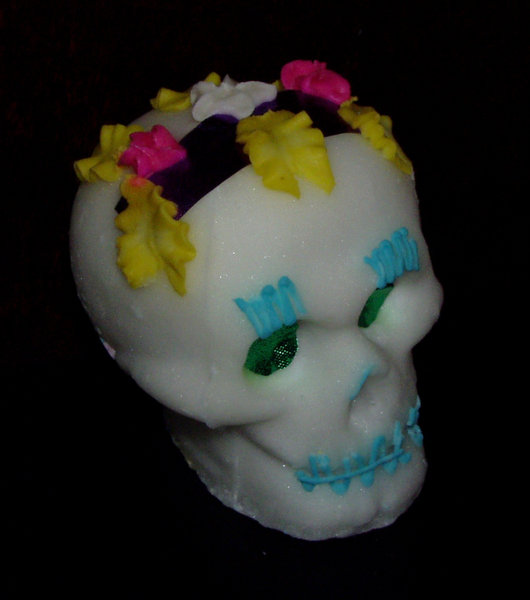Day of the Dead
The Day of the Dead (El Día de los Muertos in Spanish) is a Mexican and Mexican-American celebration of dead ancestors which occurs on November 1 and November 2, coinciding with the similar Roman Catholic celebrations of All Saints Day and All Souls Day. While it is primarily viewed as a Mexican holiday, it is also celebrated in communities in the United States with large populations of Mexican-Americans, and to a lesser extent elsewhere in Latin America. Despite the morbid subject matter, this holiday is celebrated joyfully, and though it occurs at the same time as Halloween, All Saints Day, and All Souls Day, the mood of The Day of the Dead is much lighter, with the emphasis on celebrating and honoring the lives of the deceased, rather than fearing evil or malevolent spirits. The origins of the celebration of The Day of the Dead in Mexico can be traced back to the indigenous peoples of Latin America, such as the Aztecs, Mayans Purepecha, Nahua and Totonac.

Sugar skull, typical of those eaten on El Dia de los Muertos
Rituals celebrating the lives of dead ancestors had been performed by these Mesoamerican civilizations for at least 3,000 years. It was common practice to keep skulls as trophies and display them during rituals to symbolize death and rebirth. The festival which was to become El Día de los Muertos fell on the ninth month of the Aztec Solar Calendar, near the start of August, and was celebrated for the entire month. Festivities were presided over by the goddess Mictecacihuatl, known as the "Lady of the Dead". The festivities were dedicated to the celebration of children and the lives of dead relatives.
When the Spanish Conquistadors arrived in Central America in the 15th century they were appalled at the indigenous pagan practices, and in an attempt to convert the locals to Catholicism moved the popular festival to the beginning of November to coincide with the Catholic All Saints and All Souls days. All Saints Day is the day after Halloween, which was in turn based on the earlier pagan ritual of Samhain, the Celtic day and feast of the dead. The Spanish combined their custom of Halloween with the similar Mesoamerican festival, creating The Day of the Dead.
The souls of children are believed to return first on November 1, with adult spirits following on November 2. Plans for the festival are made throughout the year, including gathering the goods that will be offered to the dead. During the period of October 31 and November 2 families usually clean and decorate the graves. Some wealthier families build altars in their homes, but most simply visit the cemeteries where their loved ones are buried and decorate their graves with ofrendas, or offerings. These include wreaths of marigold, which are thought to attract the souls of the dead toward the offerings, and toys brought for dead children (los angelitos, or little angels) and bottles of tequila, mezcal, pulque or atole for adults.
A common symbol of the holiday is the skull, which celebrants represent in masks called calacas. Sugar skulls, inscribed with the names of the deceased on the forehead, are often eaten by a relative or friend. Other special foods for El Día de los Muertos includes Pan de Muertos (bread of the dead), a sweet egg bread made in many shapes, from plain rounds to skulls and rabbits.
All text is available under the terms of the GNU Free Documentation License.